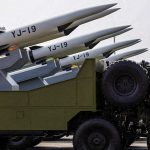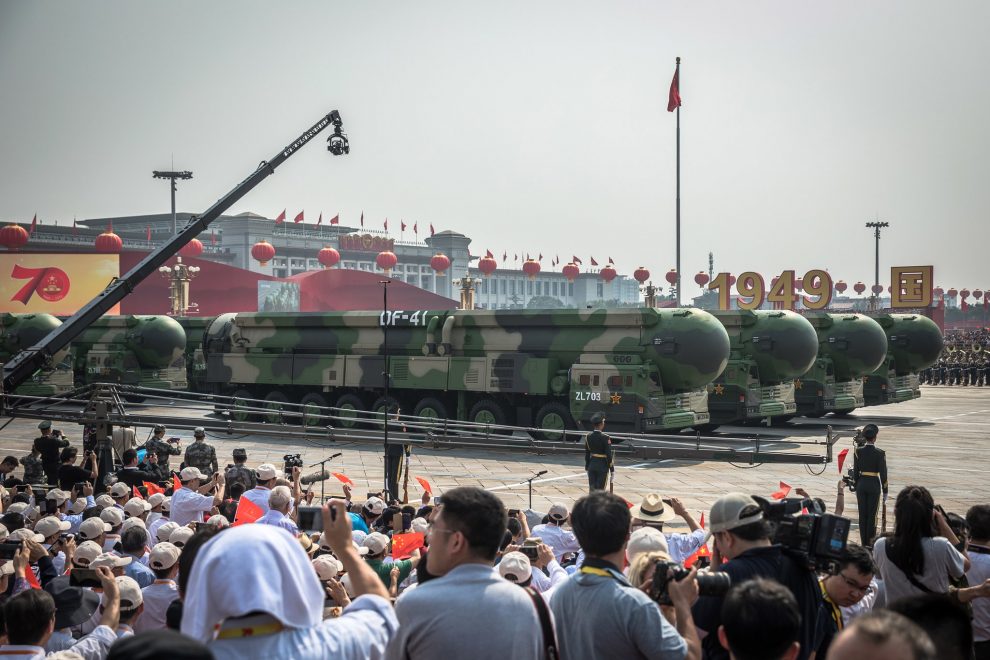Amid calls from Democratic Sen. Elizabeth Warren of Massachusetts to reduce America’s reliance on nuclear weapons, one of the country’s top military leaders said the U.S. needs to either modernize its arsenal or watch its rivals surpass it.
Adm. Charles Richard, who heads the U.S. Strategic Command, told a Senate Armed Services Committee hearing Tuesday that the U.S. is “at risk of losing credibility in the eyes of our adversaries,” according to CNN.
The Biden administration is reviewing nuclear defense policy, as do all administrations. Warren said at the hearing that this review should “reduce the goal of nuclear weapons in our defense strategy.”
“I agree with that goal, and I think it is incompatible with that staggeringly high level of spending,” Warren said.
But Richard noted that standing still will leave the country trailing Russia and China.
Russia is “aggressively engaged” in “conventional nuclear capability development and modernization, and are now roughly 80 percent complete while we are at zero,” Richard said. ‘
“It is easier to describe what they are not modernizing — nothing — than what they are, which is pretty much everything,” he said.
As for China, Richard said he “can’t get through a week right now without finding out something we didn’t know about China.”
He said China has begun an “unprecedented expansion” of its nuclear stockpile.
China has aggressively embraced a “launch on warning” posture and is “adopting a limited ‘high alert duty’ strategy,” he said, which means it could be ready to launch a strike as soon as an incoming missile is detected.
Richard also warned that China now has increased its number of “fast-breeder” nuclear reactors.
“With a fast-breeder reactor you now have a very large source of weapons-grade plutonium available to you,” Richard said, according to CNN. “That will change the upper bounds of what China could choose to do if they wanted to in terms of further expansion of their nuclear capabilities.”
Russia is “across-the-board operating new equipment,” Richard said.
“They are on the second generation of a new ballistic missile submarine. They have a new ballistic missile for that. It’s quite capable,” he said. “They have a very impressive solid-fueled intercontinental ballistic missile, brand new. They have new road-mobile missiles. They have up-gunned their bombers. They have new weapons off their bombers.”
Richard said that as of 2021, America has an “adequate missile defense.”
“We do need to make sure we pace it into the future against the threats that we’re seeing,” he said, according to CNN.
“Without the recapitalization of the existing weapons we risk obsolescence and irrelevance, and we could reach a point where no amount of money will adequately mitigate the operational risks we’ll be facing.”
The Defense Department is proposing a $95 billion program to replace its Minuteman III missiles, according to DefenseNews.
Richard noted that project Tuesday saying that “leftovers of the Cold War” would not deter China or Russia for much longer, Defense News reported.
“I need weapons systems that will ultimately work and actually make it to the target,” he said, according to Defense News.
“What they are doing to keep the [Minuteman III] functioning — remember, that is a ’70s-era weapon system that I’m going to employ against 2030-level threats. We are down to two of a particular type of switch that is required to go in the launch control centers. Nobody knows how to make it anymore. It’s obsolete, it’s not worth [it for] a company to put their effort into [making] that.”
He said that if the U.S. is not able to have an intercontinental ballistic missile system upon which the nation can rely, the Pentagon would return nuclear-capable bombers to alert status.
Story cited here.
























